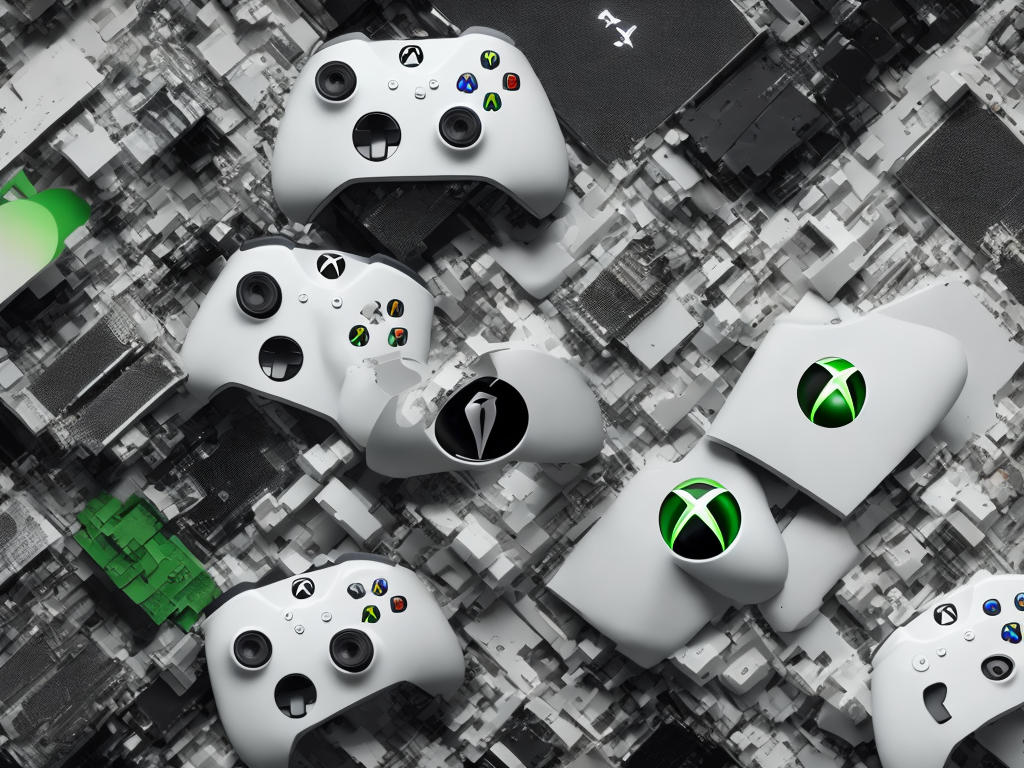
The recent release of the Xbox Series X and Series S has left many gamers wondering about the differences between the two consoles. Both being part of the next generation of gaming consoles by Microsoft, it is important for consumers to understand the variations in order to make an informed decision about which console best fits their needs and preferences.
One of the most prominent distinctions between the Xbox Series X and Series S lies in their physical appearance and dimensions. The Series X is larger and heavier compared to the Series S. The Series X stands vertically and resembles a black mini-fridge, with a large vent on the top to dissipate heat. On the other hand, the Series S has a smaller, compact design that can fit in smaller spaces. Its white color scheme gives it a sleek and modern look. While the size and weight of the consoles may not be a crucial factor for everyone, it is important to consider if you have limited space or if you plan on taking your console with you on the go.
Another significant difference between the two consoles is their overall performance and power. The Xbox Series X boasts impressive specifications, making it the most powerful console on the market currently. It houses a custom 8-core AMD Zen 2 CPU, a custom AMD RDNA 2 GPU with 12 teraflops of power, and 16GB of GDDR6 RAM. These specifications allow for 4K gaming at 60fps, with the potential for 120fps, as well as support for ray tracing and variable refresh rate. The Series X also includes a 1TB custom NVMe SSD for fast loading times and quick resume capabilities.
On the contrary, the Series S provides a more budget-friendly option with a focus on delivering a smooth gaming experience at a lower price point. It features a custom 8-core AMD Zen 2 CPU, a custom AMD RDNA 2 GPU with 4 teraflops of power, and 10GB of GDDR6 RAM. Although the Series S doesn't support gaming at 4K resolution, it can still achieve 1440p resolution at 60fps, and is even capable of upscaling games to 4K. Additionally, the Series S includes a smaller 512GB custom NVMe SSD, which may pose a limitation for those planning to store a large library of games.
Storage capacity is yet another aspect where the two consoles differ. The Series X offers a generous 1TB of storage space, allowing gamers to store a substantial number of games. This is especially advantageous for those who prefer to have multiple games readily available to play without having to frequently delete and re-download them. On the other hand, the Series S comes with a smaller 512GB SSD, which may require more frequent management of game installations and archiving games to an external drive. This could be a disadvantage for players who like to have a variety of games readily accessible.
Pricing is a significant factor for many consumers when considering which console to purchase. The Xbox Series X is priced at a higher point due to its more advanced hardware and capabilities. While the price may vary depending on the market and any promotional offers, the Series X generally comes with a higher price tag in comparison to the Series S. On the other hand, the Series S is marketed as a more affordable console, catering to gamers who are on a budget or those who prioritize value for money. Consequently, the price difference between the two consoles may sway consumers towards one or the other, depending on their financial circumstances and gaming preferences.
Backward compatibility is an area where both consoles excel. The Xbox Series X and Series S continue Microsoft's commitment to providing comprehensive backward compatibility options. Both consoles are capable of playing thousands of Xbox One, Xbox 360, and original Xbox games, making it convenient for gamers to access their existing library of games without having to repurchase them. The consoles also support a number of enhancements to improve the performance and graphical fidelity of these older games, such as increased resolutions and higher frame rates. This feature highlights the dedication of Microsoft to ensuring a seamless transition for gamers from previous generations.
In conclusion, the Xbox Series X and Series S offer distinct options to cater to different needs and budgets. The Series X is the more powerful and expensive option, with advanced hardware and capabilities, allowing for high-definition gaming at its finest. On the other hand, the Series S provides a more affordable alternative, sacrificing some power and storage capacity while still delivering an enjoyable gaming experience. Ultimately, the choice between the two consoles depends on factors such as individual budget, space limitations, and gaming preferences. Whether you prioritize power and performance or affordability and compactness, both consoles offer exciting opportunities to delve into the next generation of gaming.
 Self-Instruct
Self-Instruct